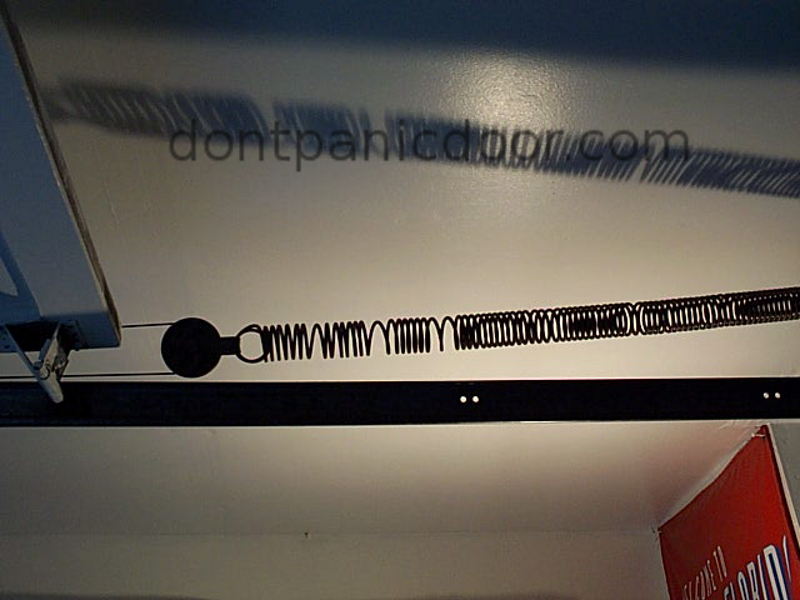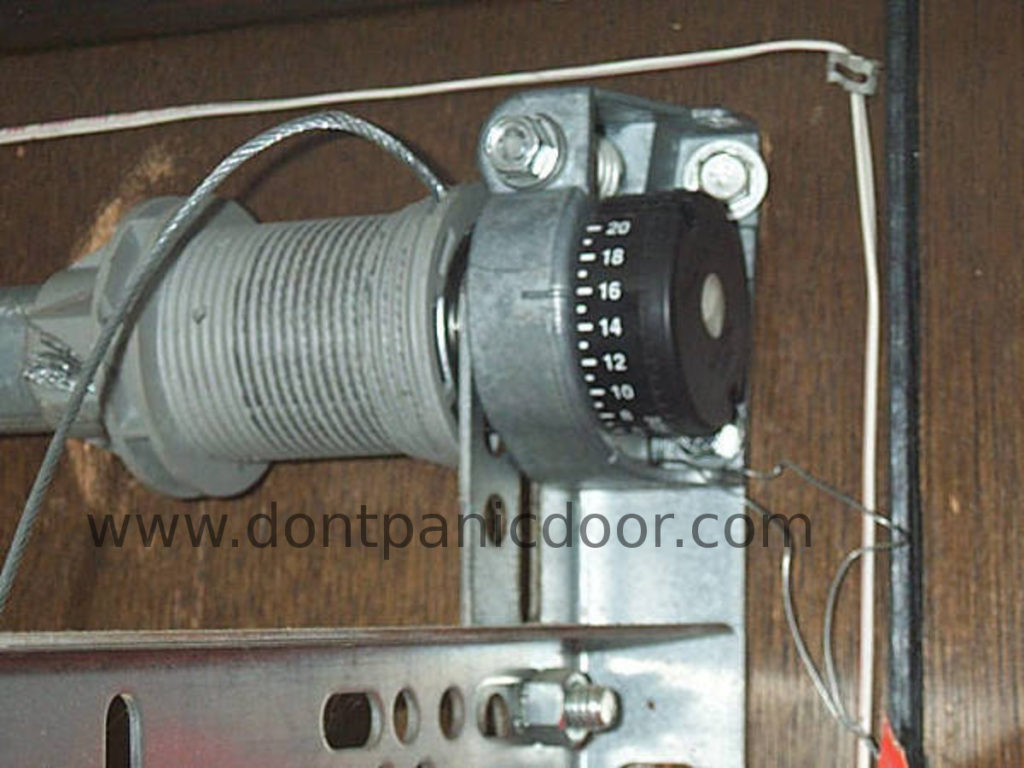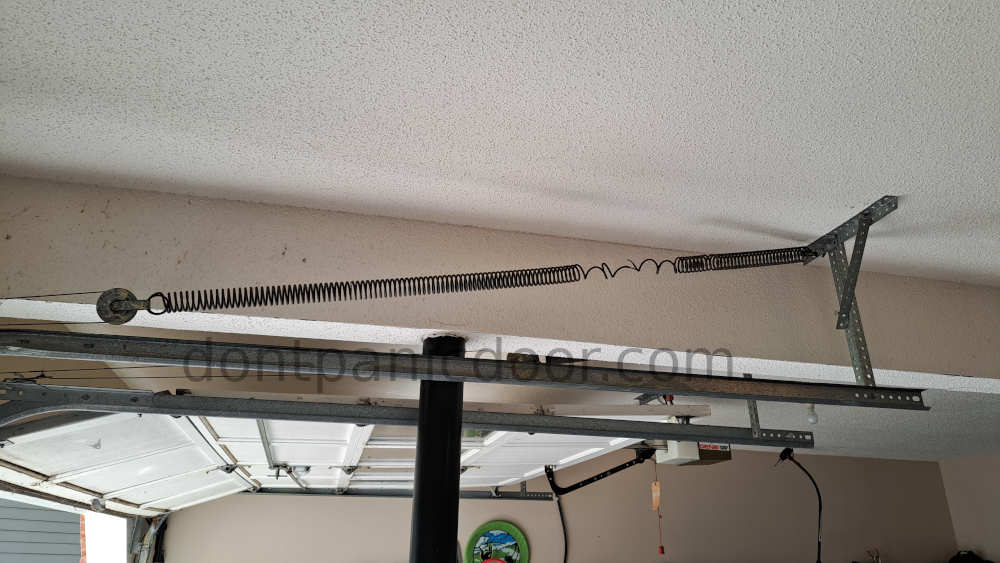On residential garage doors
Descriptions, Solutions, Advice
The purpose of this page is to provide information on broken springs to my customers. Here you will find pictures and descriptions of the popular spring styles along with info on how to identify common problems with them. There are three types of garage door springs. Your door uses one of them. Which one of the pictures below looks like the type you have?



Identify Torsion and Extension springs
In the case of torsion and extension springs it’s pretty easy to identify a broken spring. These springs are exposed and easy to inspect visually. In the case of a torsion spring, a gap of about three inches, anywhere in the body of the spring is obvious and easy to see. In the case of extension springs, usually the hook on either end of the spring will have snapped off, also easy to see. Alternatively, the coils may have areas that don’t contract like they are supposed to, as in the case of a “stretched” extension spring.
Identify Torquemaster springs
More difficult to identify is a broken Torquemaster spring, a spring system found on many Wayne Dalton brand garage doors. With a Torquemaster spring system, the springs are contained inside the torsion tube. The only way to visually inspect them is to completely disassemble the spring system and extract them from the tube. This should be done by professionals only. Short of disassembly, the best way to test for a broken Torquemaster spring is to “feel the door”.
Feel the door
With the door closed, pull the opener’s manual release cord to disengage the door from the opener. Inspect the steel cables located at the left and right ends of the door, just behind the vertical track. If these cables are slack then you definitely have broken springs. If the cables are taut then you can try to lift the garage door by hand. Position yourself at or near the middle of the door widthwise and try with one hand to lift the door. If the door is very easy to open manually then the spring/springs are not broken. The spring/springs are broken if you have to use both hands and put your back into it to lift the door off the floor.
If your Wayne Dalton garage door has a broken Torquemaster spring you will likely only be able to lift the door by hand a few inches if at all. The door will feel very heavy and once you discover this information you should accept that the reason is a broken spring. If the spring tube has two springs inside and only one of them is broken, the cables may be taut but the door will feel heavy. Both springs are broken if the cables are slack and the door will feels extremely heavy. If the spring tube has only one spring inside and it is broken, the door will feel extremely heavy and the cables will be slack.
Accept reality, the spring is broken.
The test is complete. Stop trying to open the door by hand. If you managed to open the door be very careful closing it. It may slam closed, squashing your toes or worse. The cables may have shifted or become tangled possibly leading to a door-off-track situation. Trust me, you don’t want that. As soon as you discover that your garage door has a broken Torquemaster spring you should just leave it closed until I arrive there with the repair solution.
Is this broken spring thing normal?
The most common garage door repair is replacement of broken springs. Many parts of the door suffer from wear and tear but the springs are the only part of the door that are virtually guaranteed to break/fail during the service life of the door. Spring life expectancy is gauged primarily in terms of cycles. One cycle is one opening and closing of the door. The cycle life expectancy of the average garage door spring is normally 10,000 or more. So the answer to the question “How long will my springs last?” is basically how many years will it take for you to open and close your door 10,000 times.
People who park their cars in the garage will run the door anywhere from 2 to 20+ times a day. At an average of 2 cycles per day that works out to 13.7 years estimated life span. That is a best case scenario. Usually the average is more like 4 to 6 cycles per day. At 4 the life expectancy drops to 6.8 years and at 6 we have 4.5 years. 10,000 cycles is a minimum value. Many springs are rated for much higher values. 50,000 cycles would be a very high end estimated cycle life. Average is more like 15,000 to 20,000 cycles.
All garage doors have springs and they do the hard work of raising and lowering the door. Some doors have only one spring. Most have two. Rarely a very heavy garage door may have three or even four springs. A broken garage door spring always adversely affects the operation of the door. A broken spring means the garage door feels heavy. The opener will normally not be able to lift the door more than a few inches when the door has a broken spring. That’s good because this alerts the user that there is a problem with the door. If the opener can still lift the door with a broken spring, the door and the opener are dealing with much greater forces than normal and can lead to damage to the door and/or the opener.
Advice for any door with a broken spring
- I suggest not using the opener at all if a spring is broken. Damage to the door and/or the opener may occur!
- Have the spring replaced as soon as possible to avoid further damage.
- Garage door springs are DANGEROUS!
- Spring replacement should be done by a professional.
A garage door with a broken spring can slam closed violently. Use Extreme Caution!
If you know or suspect that your garage door has a broken spring of any type I recommend that you not open the door at all until the problem is resolved.
Warranty
I warranty torsion spring replacements and Torquemaster conversions to torsion for 3 years, Torquemaster replacements and extension spring replacements for one year
Estimates for spring replacements

Torsion spring replacement on single wide doors.

Quotes for broken Torquemaster solutions

Quotes for Extension spring replacement